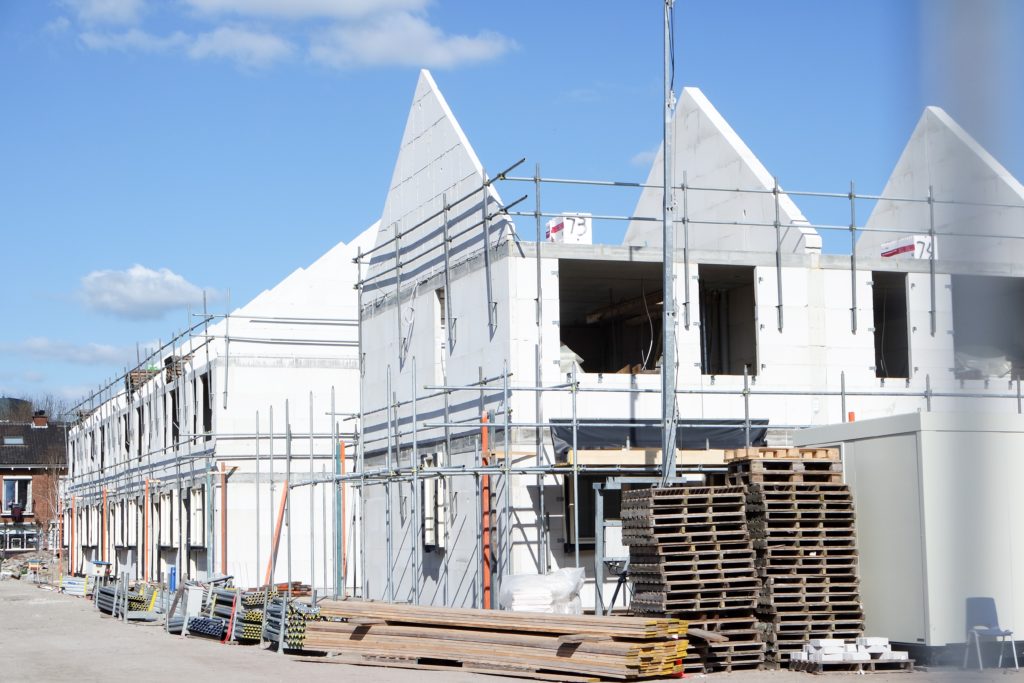Vertical vs Horizontal Construction: Pros and Cons

With material costs rising and housing markets booming across the US, many buyers are weighing the pros and cons of vertical construction versus horizontal construction.
So which is better for buyers in today’s economy?
The following are a few of the differences, as well as the advantages and disadvantages, of each type of construction.
What Is Vertical Construction?
Vertical buildings are taller than they are wide. You’ll often see vertical construction in large cities, and they are used to confine and minimize the building’s footprint.
Skyscrapers, apartments, and commercial buildings are examples of vertical construction; however, many homes are also being built vertically today.
What Is Horizontal Construction?
Horizontal buildings are wider than they are tall, and it requires more land space than vertical construction. Horizontal construction includes not just buildings but large projects such as highways, bridges, railroads, and airfields.
This type of construction would also involve transmission facilities and fiber optics. Many homes are horizontally constructed, especially rambler or ranch-style homes.
What are the Costs Involved for Each Type?
One of the first aspects to keep in mind when considering vertical vs horizontal construction is cost.
Vertical Construction Costs
Vertical construction costs may increase due to the need for safety and sturdier structures to support taller buildings. Depending on how many floors the building has, the building code could get more and more complex, requiring the use of specific materials to ensure safety.
Horizontal Construction Costs
The major cost with horizontal construction is land expense. With land becoming more sparse and more expensive, many builders are building taller homes closer together to avoid land costs.
To determine which method is more cost effective to construct, you would need to conduct cost analysis studies regarding the cost of land and materials. The major increases in material costs can rival the costliness of land, so cost benefits should be determined on a project-to-project basis.
Where to Start on My New Construction Project
No matter what kind of project you’re working on, partnering with a horizontal or vertical contractor is wise to determine which type of construction is right for you. They can help you plan, budget, and execute your project seamlessly.
Vertical vs Horizontal Construction: Pros & Cons
In addition to cost, it’s important to consider other aspects of your building project, such as the equipment your crew will have available, how many contractors/subcontractors you need, whether your building in an urban or rural area, and what local codes you need to follow.
Here are some additional pros and cons of each type of construction method.
Horizontal Construction
Pros:
- A crew can easily move construction materials when building a horizontal structure.
- Production and material costs are normally less than vertical construction.
- Horizontal construction usually requires fewer subcontractors than vertical building.
Cons:
- Horizontal building requires a lot of space and leaves a large footprint.
- This type of construction is difficult in large urban areas.
- Contractors often work around underground utilities, wetlands, and traffic.
Vertical Construction
Pros:
- This type of construction requires less space than horizontal construction.
- This type works well in most urban areas.
- Vertical buildings may draw tourists and become a good source of income.
Cons:
- Material costs can be higher, depending on the size and code requirements of the building.
- Vertical construction requires greater collaboration between architects, engineers, and subcontractors.
- A vertical structure will normally require more safety standards.
What are the Trends for Each Type of Construction?
According to Nest Realty, vertical construction is becoming increasingly popular among home buyers. Villas, townhomes, and other types of attached homes are types of vertical construction that share a wall with other properties.
Not only are individuals moving toward vertical construction, but governments and city planners are, as well. Vertical cities are likely the future of urban planning. Vertical construction is energy efficient and produces a smaller footprint than horizontal construction. It’s also easier on the environment because it takes up less land.
Advancing technology also favors vertical over horizontal construction. Software companies are increasingly investing in vertical buildings. Software applications are helping to maximize safety while keeping costs down. Forbes describes how the utilization of technologies are paving the way for vertical cities.
With these pros and cons, you can determine which style of construction is best for your project.







